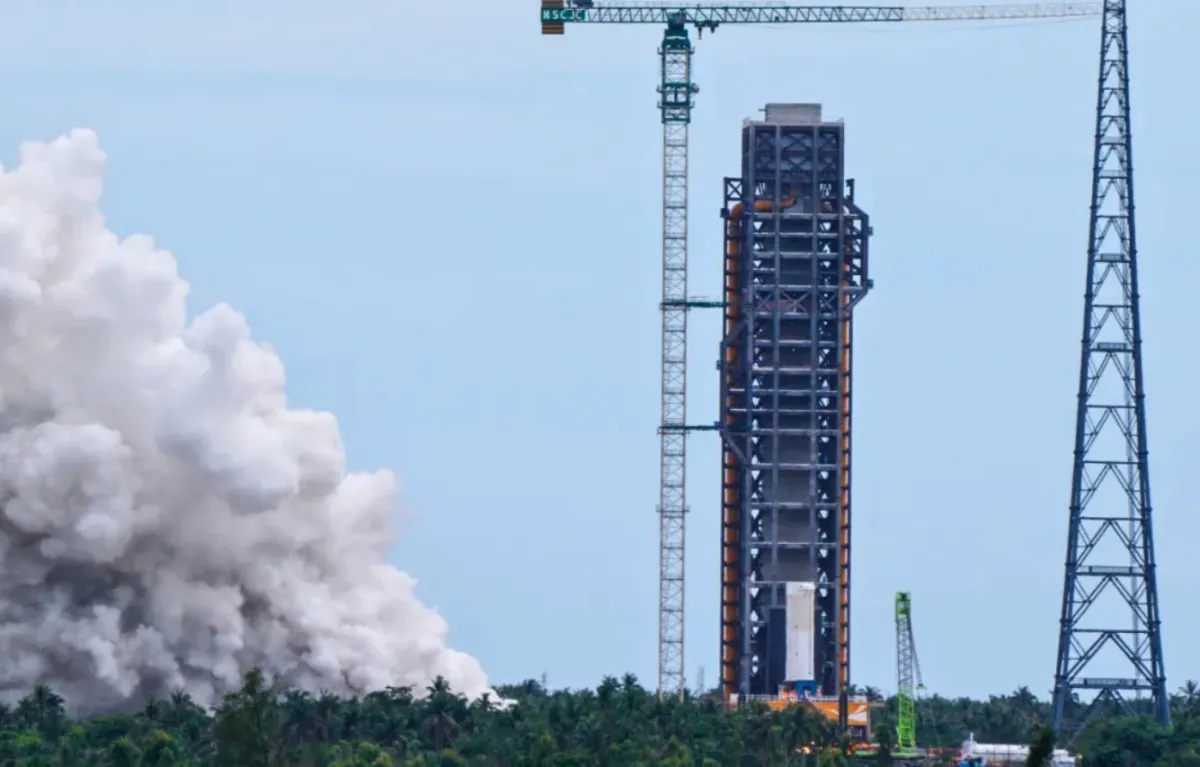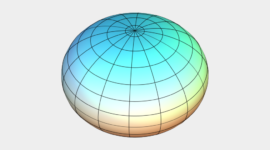Beijing, August 16, 2025 – China has taken a significant leap forward in its lunar exploration ambitions by successfully conducting the first static fire test of a seven-engine cluster for its next-generation Long March 10 rocket. The groundbreaking test, carried out at a propulsion test facility in northern China, marks a crucial step in the country’s plan to send astronauts to the Moon by 2030.
The static fire test, which lasted 30 seconds, involved igniting all seven YF-100K engines simultaneously—a critical validation of the rocket’s propulsion system ahead of its planned debut flight in 2027. The successful test underscores China’s rapid advancements in heavy-lift launch vehicle technology, positioning it as a key competitor in the new era of lunar exploration alongside the United States’ Artemis program and other international efforts.
Details of the Seven-Engine Static Fire Test
The Engine Cluster
The Long March 10 (CZ-10) is China’s next-generation crewed launch vehicle, designed specifically for lunar missions. The rocket’s first stage is powered by a cluster of seven YF-100K engines, each generating 120 tons of thrust (1.18 MN) using kerosene and liquid oxygen (kerolox) propellants.
- Engine Configuration: The seven-engine arrangement is a notable departure from China’s previous rockets, which typically used fewer, more powerful engines. This design improves redundancy and thrust control.
- Thrust Output: Combined, the cluster produces 840 tons of thrust, making it one of the most powerful first-stage propulsion systems in China’s fleet.
- Comparison with Other Rockets:
- NASA’s SLS Core Stage: 4 RS-25 engines (1.9 MN each).
- SpaceX’s Falcon 9: 9 Merlin engines (845 kN each).
- Long March 10’s seven-engine approach balances power and reliability, crucial for crewed missions.
Test Objectives and Results
The primary goal of the static fire test was to verify:
- Engine Synchronization: Ensuring all seven engines ignite and throttle uniformly.
- Thermal and Structural Integrity: Assessing how the rocket’s frame handles extreme heat and vibration.
- Combustion Stability: Preventing dangerous oscillations that could lead to engine failure.
- Thrust Vector Control (TVC): Confirming the engines’ ability to adjust direction for stable flight.
The test was deemed a complete success, with all engines performing within expected parameters. Data collected will be used to refine the design ahead of a full-stage static fire test—a final check before the rocket’s maiden flight.
The Long March 10: China’s Moon Rocket
- Design and Capabilities
The Long March 10 is a three-stage rocket designed to carry:
- 27 tons to lunar transfer orbit (LTO) for crewed missions.
- 70 tons to low Earth orbit (LEO), making it comparable to NASA’s Space Launch System (SLS) Block 1.
Key Features:
- Modular Design: Can be configured for both crewed lunar missions and future space station logistics.
- Reusability: While not fully reusable like SpaceX’s Starship, some components may be recoverable.
- Human-Rated Safety: Built with multiple redundancies to ensure astronaut safety.
- Role in China’s Lunar Program
The Long March 10 is central to China’s manned lunar landing program, which includes:
- Chang’e-6 to -8 Missions: Uncrewed lunar sample return and base construction.
- Crewed Missions (2030+): Sending taikonauts to the Moon’s surface, potentially near the South Pole—a region rich in water ice.
- Lunar Research Station (ILRS): A planned International Lunar Research Station in collaboration with Russia and other partners.
Global Implications: The New Space Race
China’s successful test places it firmly in the second wave of lunar exploration, alongside:
- NASA’s Artemis Program: Targeting a 2026 crewed landing (Artemis III).
- SpaceX’s Starship: Expected to support NASA’s lunar missions.
- India’s Gaganyaan & Japan’s LUPEX: Emerging players in deep-space exploration.
Strategic Motivations:
- Technological Leadership: Demonstrating advanced propulsion and heavy-lift capabilities.
- Resource Utilization: Securing access to lunar water ice for future settlements.
- Geopolitical Influence: Establishing China as a dominant space power.
What’s Next for China’s Moon Rocket?
Following this test, the Long March 10 program will proceed with:
- Full-Stage Static Fire Test (2026): A complete first-stage ignition.
- Uncrewed Test Flight (2027): Validating the rocket’s performance in space.
- Crewed Lunar Missions (2030+): Finalizing spacecraft (next-gen crew capsule) and lunar lander.
China’s successful seven-engine static fire test is a defining moment in its quest to land astronauts on the Moon. With the Long March 10 on track for its debut flight, the country is positioning itself as a leading force in deep-space exploration, setting the stage for a new era of lunar competition and collaboration.




